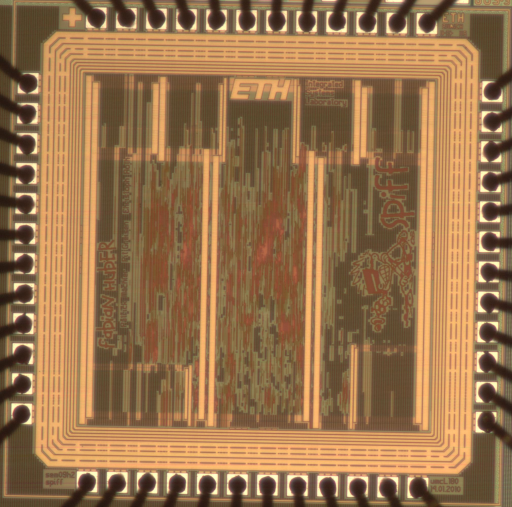The IIS Chip Gallery
Spiff (2009)

by

| Application | Communication |
| Technology | 180 |
| Manufacturer | UMC |
| Type | Semester Thesis |
| Package | QFN56 |
| Dimensions | 1525μm x 1525μm |
| Gates | 80 kGE |
| Voltage | 1.8 V |
| Power | 209 mW |
| Clock | 128.2 MHz |
Gradient Pursuit (GP) is a greedy algorithm which is able to extract the sparse structure of broadband channel impulse responses from given measurements. GP fills the gap between the computationally simple, but only slowly converging matching pursuit (MP) and the fast coverging, but more complex orthogonal matching pursuit (OMP). GP can almost achieve the performance of OMP, while its computational complexity is still comparable to MP.
In this project, the GP algorithm for estimating a sparse channel impulse response was implemented. This algorithm selects one new channel in each iteration. Unlike MP, not only the newly selected tap is considered, but all previously selected taps are updated. This is done by computing an optimization direction in the vector space spanned by all preciously chosen taps. The benefit of GP compared to OMP is the easier computation of the optimization step.
The hardware implementation uses four parallel multiply-and accumulate units. This is possible since the GP algoirthm is inherently qualified for parallel processing. As the structure is very similar to MP, the design was based on an MP implementation. Besides new control logic and new memories, a divider unit was necessary. To mitigate the high dynamic-range requirements in the divider, pseudo-floating-point structures were added to the divider.